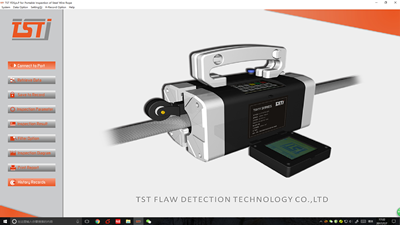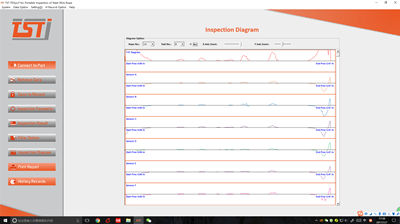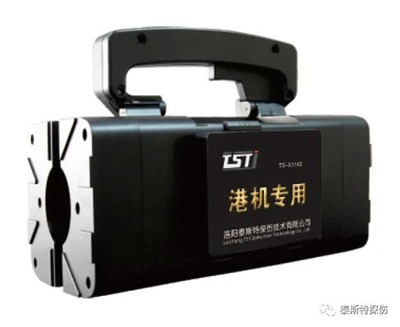Port-specific TS-X11 Series Steel Wire Rope Flaw Detection (Portable) System

Inspection Site of Yingkou Port

Inspection Site of Qingdao Port

Inspection Site of Yantai Port
02

Port-used TST Wire Rope Flaw Detection (Online) system V3.0
Apply to: Port equipment with wire rope such as ship unloaders, gantry cranes, winches, tractors and portal cranes


03

Port Dedicated Endless Rope Online Real-Time Monitoring System
It can adapt to the working conditions of the non-removable cable gripper

04

TST Conveyor Belt Steel Core Flaw Detection System

1 Schematic Diagram of product Application Site

Inspection Report


Advantages
01 Quantitative Inspection
Precise and quantitative positioning detection
02 Qualitative Inspection
According to the pattern recognition software, the flaw types of wire rope such as internal and external fatigue, corrosion, broken wire, abrasion,pitting can be judged;
03 Wide-Range Inspection
The effective extraction distance of the signal (with the surface of the tested wire rope) can be up to 30mm;
04 High-Speed Inspection
Electromagnetic response supports detection speed of 30m/s;
05 Intelligent Inspection
AI intelligent algorithm, intelligent automatic quantitative discrimination, classification and statistics of various internal and external damages, and accurate assessment of the safety status of wire ropes;
06 Accurate Inspection
Unique structure design and anti-interference circuit design
Electromagnetic induction signal-to-noise ratio: S/N>85dB;
Adopt electromagnetic compensation technology and introduce variable tracking correction technology
07 LOT cloud technology
Integrate data interconnection analysis technologies such as the Internet of Things(LOT), big data, cloud computing, etc., so that safety monitoring information can be expanded from local to regional scale, and distributed terminal information into the overall safety information database to achieve "borderless" interconnection of safety management.



















